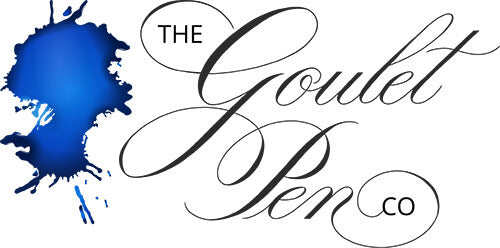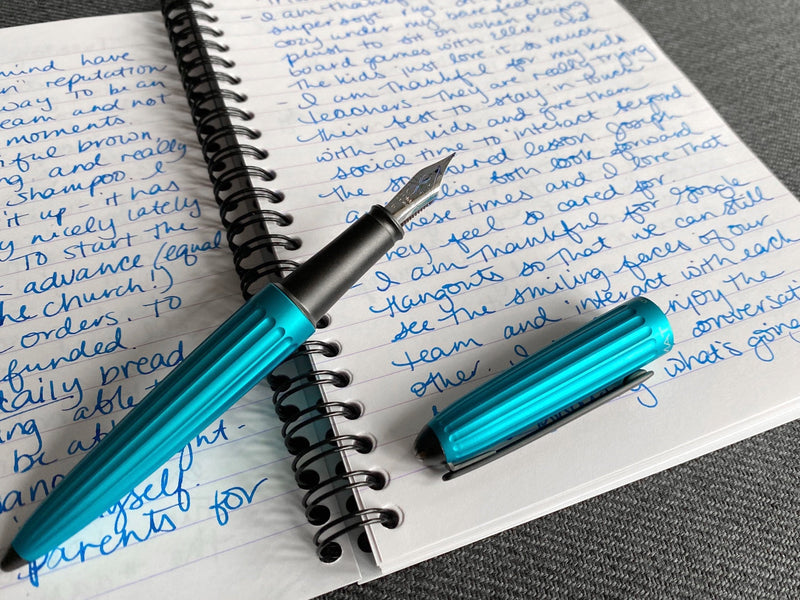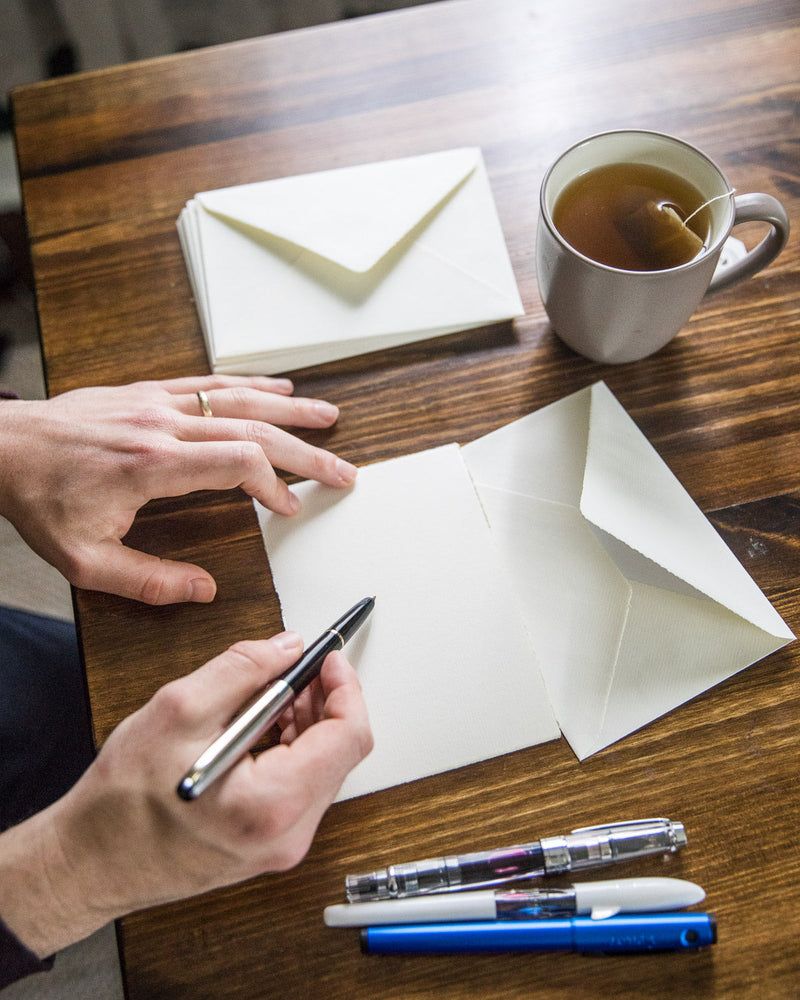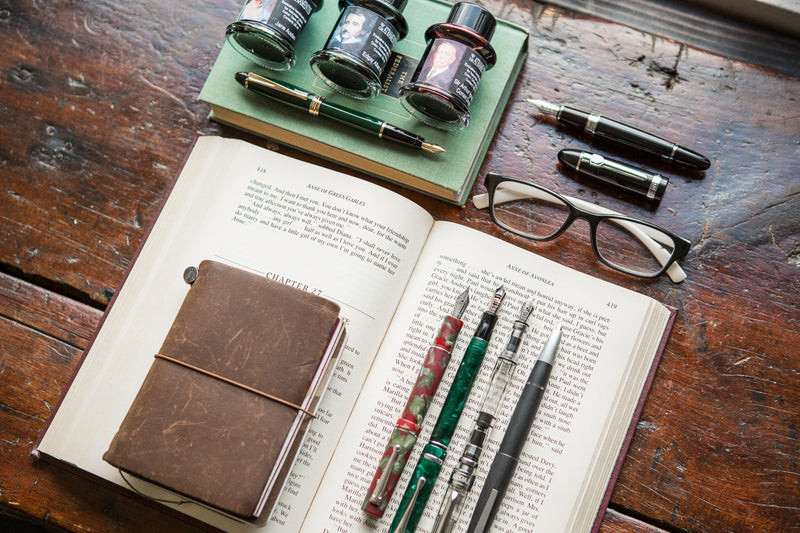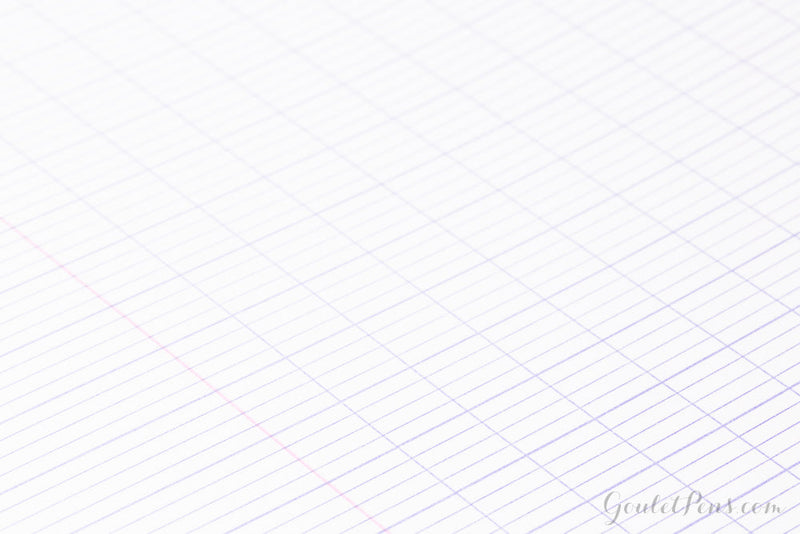Tips For Starting an Ink Journal
Hi all! Adrianne here from the Customer Care team. While we are working remotely I decided to start an ink journal. I wanted to catalogue my ink collection and keep a record of the inks I used in my pens. To branch out and use inks I'd forgotten about. To see what special properties the ink had. And, most importantly, I wanted to use my pens daily!
Once I started doing this, it became a really fun way to unwind. I put some music or a movie on, ink up a pen or two, and write a little to clear my mind.
Here are some questions to consider to help you get started:
Pick the type of notebook you want. Do you want it to have a certain line type? What about binding- spiral, stitched or staple bound? Is lying flat important? Will you do anything else in this journal? How big do you want it to be? Do you want to take it with you, or leave it in one place at home? Is this going to be the paper you use to write a lot, or a paper to really show off your inks' properties? Ask yourself these types of questions to make sure you pick the right notebook. Use the filters on our site to help find the best notebook for you or reach out and we can help!
I went with a spare Rhodia Classic Side Staplebound A5 Notebook Ice White because I wanted white paper. I like the graph lines for making sure my writing is neat and tidy. This notebook lies pretty flat; it's easy to do a sample on each page. If and when I travel it's small enough I can take it with me if I want.
What things do you want to know about your ink? Are you looking for specific things like dry time, sheening, shading, water resistance? Or do you just want to log the ink that is in a pen and what it looks like? This is your journal, there are no right answers. Just decide what you want and what will work for you. Remember, if you don't like it, you won't use it.
How do you want to organize the pages in your journal? By Brand, property, color? Are you only going to put one ink on a page, or more than one? Will you write on the front and back sides of the paper? If you're an organizer, then this is your time to shine! Use washi tape, tabs, stencils or even stickers to denote your organization system.
Commit to a format. Using a format will let you compare the same ink in different pens and different inks in the same pens. You can use your record to see which writing experience you like the best.
I didn't commit to a format when I started. My early entries were all over the place. I decided to make sure I had the pen, ink and date for each entry. I also needed to know about dry time and water resistance. I wanted to see if my ink choice had any sheen to it and if it had any shading properties. I needed a place for my own impressions of the ink. As this journal evolved, I decided I wanted to see if I had similar inks in my collection. Lastly I added a small square of Tomoe River paper to each page. It allowed me to see how the ink performed on different paper types without needing 2 journals.
Use it (THIS IS THE MOST IMPORTANT STEP)! What good is a well planned journal if you don't use it? Don't be afraid to make mistakes and evolve over time. You might not need information that you thought was important. For example, when I started with the Ink Journal, I wrote down the paper type. You might not know this (I obviously didn't think about it!), but every page in a journal is the same paper type ;) !
You might decide you want to know something else about your ink. It's ok to change. Perfection is not the goal, usefulness is. No matter if you do this first thing with a new pen and ink, or when you're down to your last few drops of the bottle or sample, find what works for you and what is fun.
I find that since starting my ink journal I've not kept so many pens inked up. This is actually a good thing for me since now I use the pens that I have ink in. I dedicate a little bit of time a few days a week and update my ink journal. I use my pens for actual writing more because I know what ink is in what pen, and how it's going to perform.
